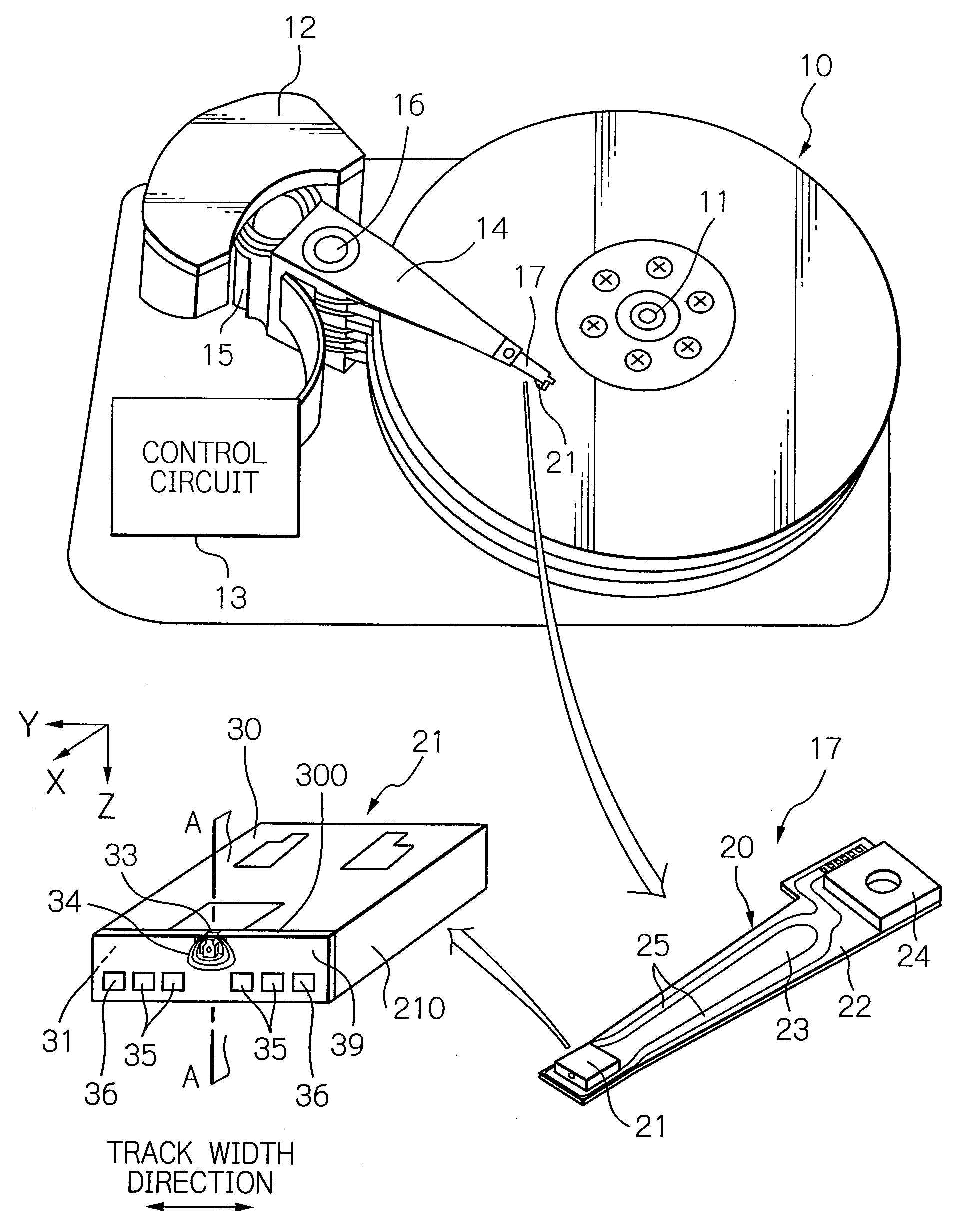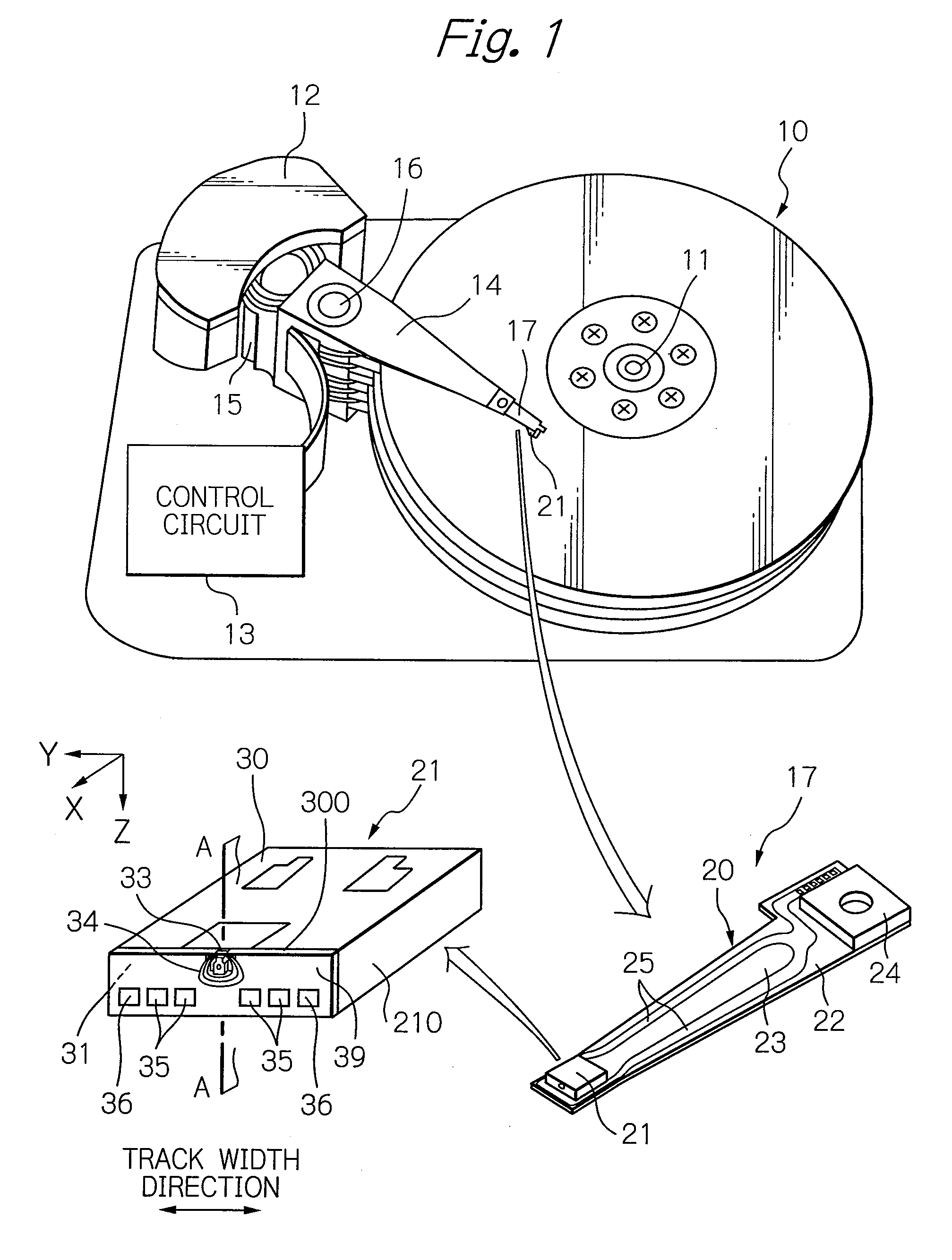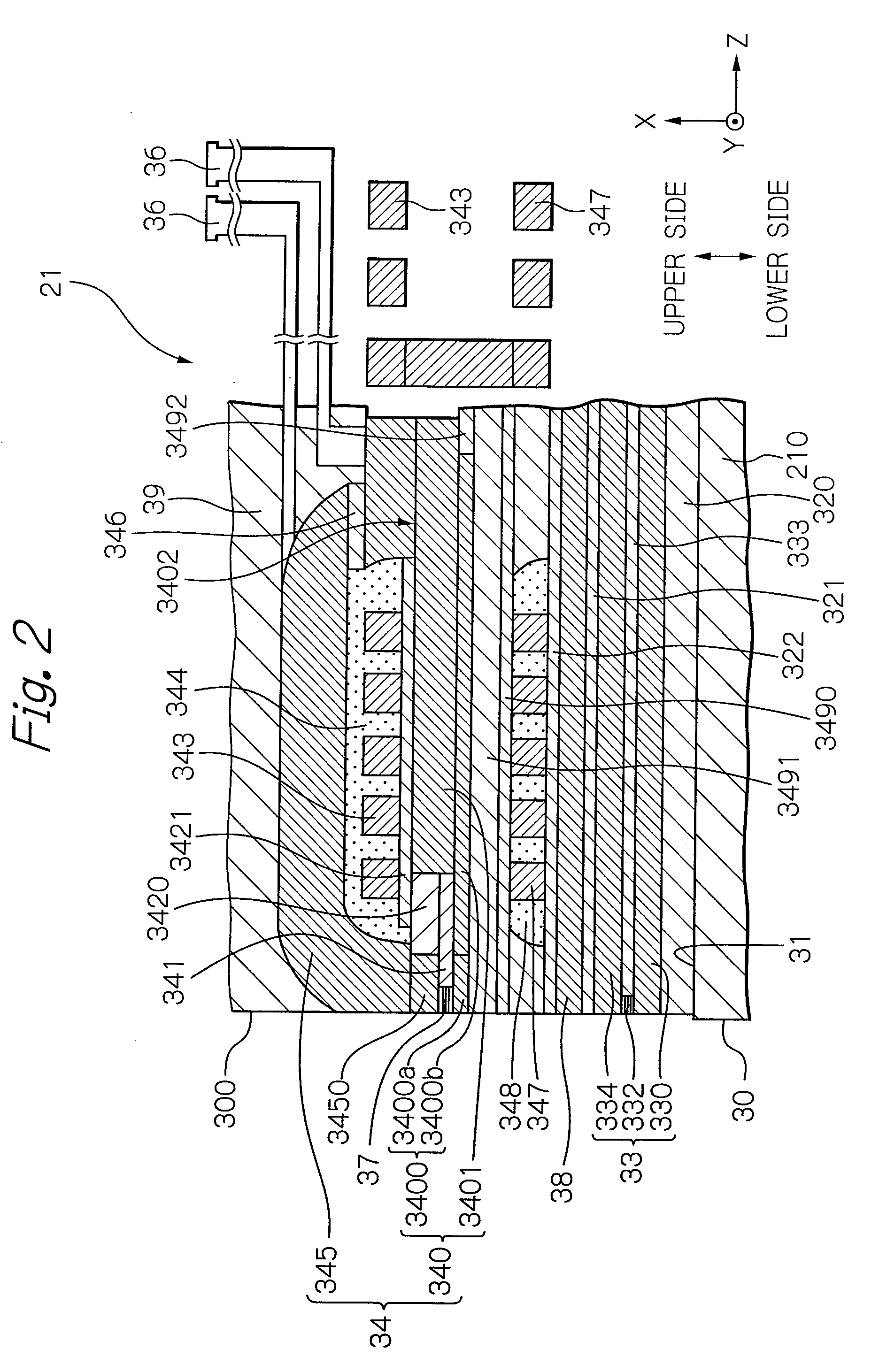Thin-film magnetic head for microwave assist and microwave-assisted magnetic recording method
a technology of magnetic recording and thin film, which is applied in the field of thin film magnetic recording head using microwave-assisted magnetic recording technique, can solve the problems of head not being able to write data to the magnetic stability of the record bit to be degraded, and the increase of the coercive force of the magnetic recording medium, so as to achieve the effect of stably generating electromagnetic fields
- Summary
- Abstract
- Description
- Claims
- Application Information
AI Technical Summary
Benefits of technology
Problems solved by technology
Method used
Image
Examples
example 1
PRACTICAL EXAMPLE 1
[0108]Table 1 shows the configuration of the electromagnetic-field generating element 37 (FIG. 4) used for practical example 1.
TABLE 1Electromagnetic-fieldConstituentgenerating element 37materialThickness (nm)ConfigurationProtectingTa5layer 374Free layer 373Co90Fe1030IntermediateCu2.5layer 372ExcitationCo50Fe5020layer 371Base layer 370Ni60Cr402Layer surface area (nm × nm)about 40 × about 40Element resistance (Ω)25MR ratio (ratio of 5resistance change) (%)
[0109]In table 1, the layer surface of the layer surface area forms YZ-plane. Each layer of the electromagnetic-field generating element 37 was formed by using sputtering method; sequentially stacked, from the formed main pole front end 3400a, were a base layer 370, a spin-wave excitation layer 371, a non-magnetic intermediate layer 372, a magnetization free layer 373 and a protecting layer 374. An induced magnetic anisotropy with the direction perpendicular to the layer surface was given, by applying magnetic fie...
example 2
PRACTICAL EXAMPLE 2
[0111]Table 2 shows the configuration of the electromagnetic-field generating element 70 (FIG. 7a) used for practical example 2.
TABLE 2Electromagnetic-fieldConstituentgenerating element 70materialThickness (nm)ConfigurationIntermediateCu2.5layer 702ExcitationCo50Fe5020layer 701Base layer 700Ni60Cr402Layer surface area (nm × nm)about 40 × about 40Element resistance (Ω)23MR ratio (ratio of 5resistance change) (%)
[0112]In table 2, the layer surface of the layer surface area forms YZ-plane. Each layer of the electromagnetic-field generating element 70 was formed by using sputtering method; sequentially stacked, from the formed main pole front end 3400a, were a base layer 700, a spin-wave excitation layer 701, and a non-magnetic intermediate layer 702. An induced magnetic anisotropy with the direction perpendicular to the layer surface was given, by applying magnetic field of 50 Oe perpendicular to the layer surface during depositing the spin-wave excitation layer 701....
PUM
| Property | Measurement | Unit |
|---|---|---|
| thickness | aaaaa | aaaaa |
| thickness | aaaaa | aaaaa |
| thickness | aaaaa | aaaaa |
Abstract
Description
Claims
Application Information
 Login to View More
Login to View More - R&D
- Intellectual Property
- Life Sciences
- Materials
- Tech Scout
- Unparalleled Data Quality
- Higher Quality Content
- 60% Fewer Hallucinations
Browse by: Latest US Patents, China's latest patents, Technical Efficacy Thesaurus, Application Domain, Technology Topic, Popular Technical Reports.
© 2025 PatSnap. All rights reserved.Legal|Privacy policy|Modern Slavery Act Transparency Statement|Sitemap|About US| Contact US: help@patsnap.com



